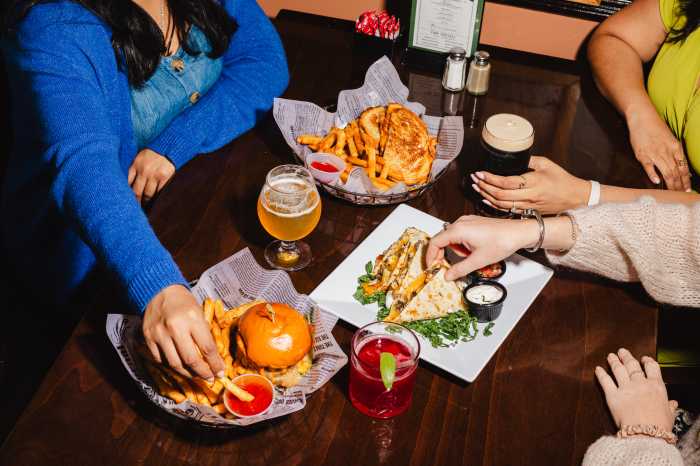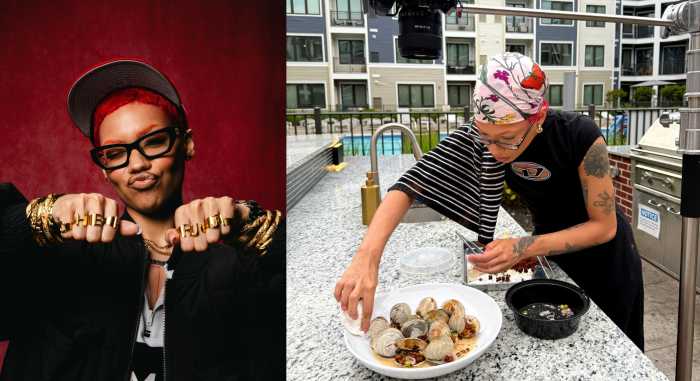As a mother of two, Nicole M. Avena knows firsthand how confusing and hard it can be to feed babies and toddlers.
As a doctor, she also knows how important it is for them to eat well.
In “What to Feed Your Baby & Toddler” ($16.99), out this week, the research neuroscientist at Manhattan’s Icahn School of Medicine at Mount Sinai provides a month-by-month guide to introducing your child to solid foods. It also offers nutrient-rich recipes by food writer Charity Ferreira based on those recommendations.
amNewYork spoke with Avena about her new book.
What common questions do you get from parents?
They have a lot of questions about how to get your kids to eat healthy. Toddlers are picky people, they get it in their mind that they don’t want something. In the book I tried to give a lot of practical tips on ways to sneak healthy food into baby’s diet. The idea is sometimes instead of getting baby to eat pureed carrots if they’re not willing to eat pureed carrots, you can sneak it in through pasta sauce, for instance. That helps later on, when you do convince them to try the carrots on their own, the taste will be somewhat familiar because they’ve been exposed to it. A lot of this is biological — babies are supposed to be afraid of new foods, we’re born with this aversion to try new things. It can be frustrating from a parental standpoint.
What was some recent research you wanted to include?
There’s been a lot of research that’s been coming out that’s focused on the first 1,000 days of life and the importance of deficiencies in nutrition during this period and how that can have a long-term effect on cognitive development later on. Many toddlers especially are deficient in one or more nutrients in part because toddlers don’t typically take a multivitamin. There isn’t really a good multivitamin yet; they can’t chew the gummies yet because it’s a choking hazard. They’re really reliant on food. That was one of the things that inspired me to write this book, knowing that these kids are nutrient deficient can have long-term health impacts. And also short-term health impacts — if babies are nutrient deficient, it’s associated with irritability and lethargy.
You also devote a section to allergies. Was there anything in particular you wanted to address there?
That’s always a question parents have, about introducing foods that are allergenic, especially if you have another child with food allergies. I wanted to make sure the information the parents were going to be getting is up to date from the American Academy of Pediatrics. They are now recommending for kids who are siblings of kids who are allergic to peanuts to be introduced to peanuts earlier. It used to be the case, if you were at a high risk for an allergy, doctors would say to hold off — wait until 2 years old. But there’s been research that’s suggested earlier exposure to certain allergens for kids that are at risk is associated with a decrease in the development of the allergy. It gives hope to parents who have children who are at risk for allergies — they should seek out the advice of their pediatrician early on and plan accordingly. Timing is very important when it comes to that.
Do you see yourself continuing your work beyond age 2? Do you see a need there?
I really do. I think education all throughout childhood and even through adulthood is important when it comes to nutrition. I’ll definitely be doing more work in this area. I’m doing a lot of work with organizations to try to promote healthy eating and promote education about the importance for nutrition for our school-aged kids — just getting them excited about science and understanding why the fuel we put into our bodies is important. So much of what we’re seeing happening later on in life is in many ways ingrained by the behaviors and actions kids learned when they’re little ones. I think encouraging kids to adopt these healthy eating patterns early on is really essential to combating our obesity problem that we have with adults.
What are products you like if you can’t make every snack or are in a pinch?
I think there is definitely a place for having some convenience involved here, especially when it comes to baby food. We can’t make all the food ourselves, it’s a very labor-intensive process. I do like Plum Organics. I found that they’re unique because they combine vegetables with a lot of their different blends. If you’re going to buy baby food … you want to make sure something in the blend is also a vegetable. A lot of the baby food companies don’t always put a lot of vegetables into the blends, and that’s because the baby likes the taste of fruit better; they want baby to like it so mom and dad keep buying it. Lots of foods I’ve noticed have become so oversweetened with the fruit. Those sweet teeth can develop very, very early on. Fruit is great but just has to be in moderation.
Get your greens
Among the recipes featured in her book, this green risotto — geared toward 22-month-old children — has become a weekly staple in Avena’s household. “The green risotto has become the favorite for my 2-year-old,” she said. “She was really the test case for many of these recipes.” Pureed spinach — rich in vitamin K — gives the risotto its green.
Green risotto
Makes 4 servings
- 2 cups packed washed baby spinach leaves
- 1 cup Arborio rice
- 3 to 3 1⁄2 cups chicken, beef, or vegetable broth
- 1 tbsp. olive oil or butter
- 1⁄4 cup grated Parmesan cheese
- Sea salt
1. Place the spinach in a steamer and set in a saucepan with an inch or so of water in the bottom. Cover tightly, bring the water to a boil, and steam until the spinach is bright green and wilted, 1 to 2 minutes.
2. Transfer the spinach to a food processor. Puree until smooth, stopping to scrape the sides of the bowl a few times and adding a little water if necessary to get the right consistency.
3. In a small saucepan over medium-high heat, combine the rice and 3 cups of the broth and bring to a boil. Turn the heat to low, cover, and cook, stirring frequently, until the liquid is absorbed and the rice is soft and creamy, about 20 minutes. If you want a softer consistency, add another 1⁄4 cup broth and continue to cook for several minutes longer. Let cool for 10 minutes, then stir in the olive oil and Parmesan cheese and season with salt. Stir in the spinach and thin with the remaining 1⁄4 cup broth, if desired, before serving.
Reprinted with permission from “What to Feed Your Baby and Toddler,” copyright © 2018 Nicole M. Avena, PhD. Published by Ten Speed Press, an imprint of Penguin Random House.
IF YOU GO
Dr. Nicole M. Avena hosts a book signing benefiting Green Beetz on May 9 from 6-7 p.m. at Kidville | 163 E. 84th St. | tickets $25 (includes book) at kidvilleues.pike13.com































